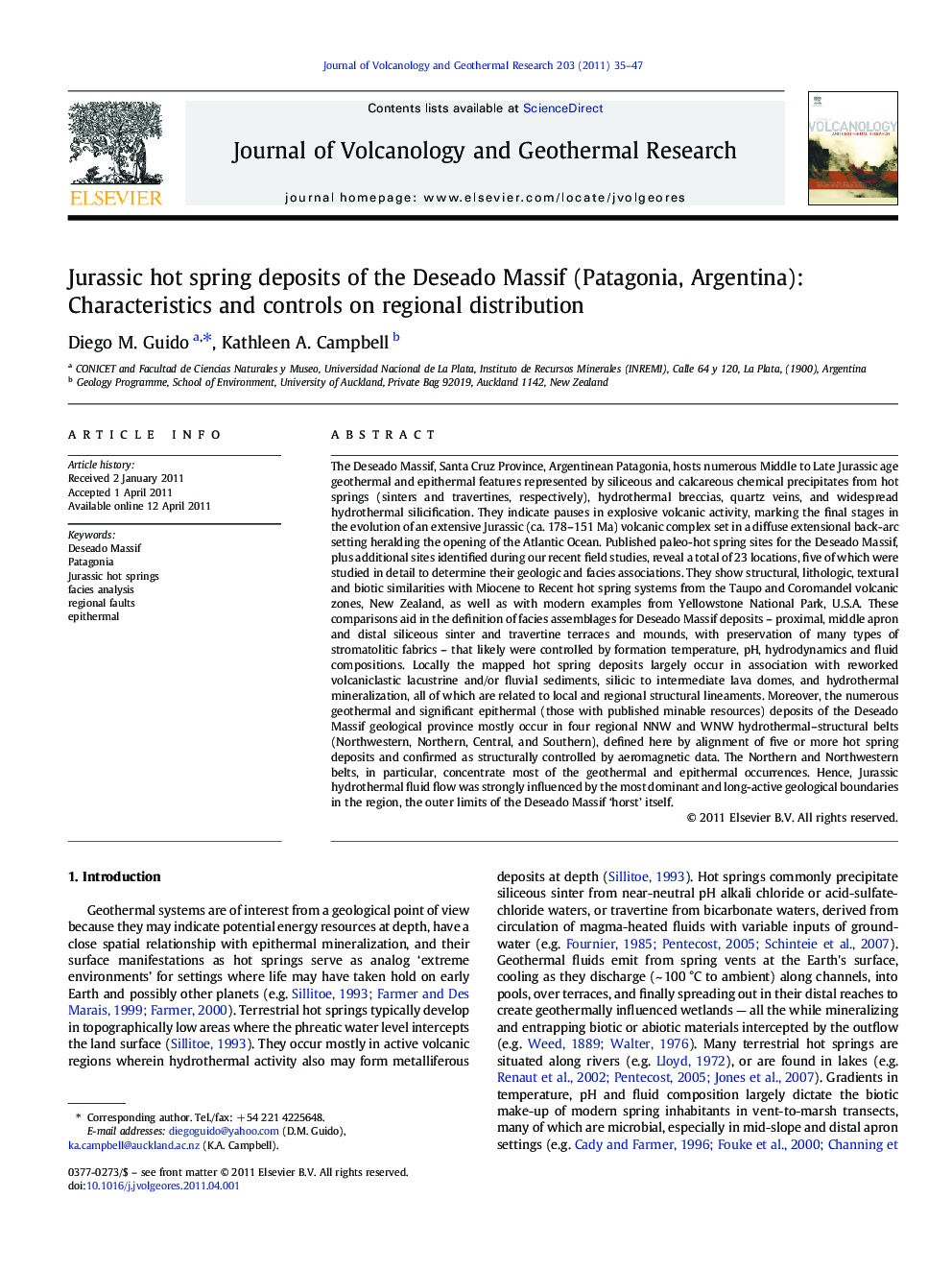| کد مقاله | کد نشریه | سال انتشار | مقاله انگلیسی | نسخه تمام متن |
|---|---|---|---|---|
| 4714015 | 1638403 | 2011 | 13 صفحه PDF | دانلود رایگان |

The Deseado Massif, Santa Cruz Province, Argentinean Patagonia, hosts numerous Middle to Late Jurassic age geothermal and epithermal features represented by siliceous and calcareous chemical precipitates from hot springs (sinters and travertines, respectively), hydrothermal breccias, quartz veins, and widespread hydrothermal silicification. They indicate pauses in explosive volcanic activity, marking the final stages in the evolution of an extensive Jurassic (ca. 178–151 Ma) volcanic complex set in a diffuse extensional back-arc setting heralding the opening of the Atlantic Ocean. Published paleo-hot spring sites for the Deseado Massif, plus additional sites identified during our recent field studies, reveal a total of 23 locations, five of which were studied in detail to determine their geologic and facies associations. They show structural, lithologic, textural and biotic similarities with Miocene to Recent hot spring systems from the Taupo and Coromandel volcanic zones, New Zealand, as well as with modern examples from Yellowstone National Park, U.S.A. These comparisons aid in the definition of facies assemblages for Deseado Massif deposits – proximal, middle apron and distal siliceous sinter and travertine terraces and mounds, with preservation of many types of stromatolitic fabrics – that likely were controlled by formation temperature, pH, hydrodynamics and fluid compositions. Locally the mapped hot spring deposits largely occur in association with reworked volcaniclastic lacustrine and/or fluvial sediments, silicic to intermediate lava domes, and hydrothermal mineralization, all of which are related to local and regional structural lineaments. Moreover, the numerous geothermal and significant epithermal (those with published minable resources) deposits of the Deseado Massif geological province mostly occur in four regional NNW and WNW hydrothermal–structural belts (Northwestern, Northern, Central, and Southern), defined here by alignment of five or more hot spring deposits and confirmed as structurally controlled by aeromagnetic data. The Northern and Northwestern belts, in particular, concentrate most of the geothermal and epithermal occurrences. Hence, Jurassic hydrothermal fluid flow was strongly influenced by the most dominant and long-active geological boundaries in the region, the outer limits of the Deseado Massif ‘horst’ itself.
Research Highlights
► 23 Jurassic hot spring deposits give overview of geothermal systems in Patagonia.
► They occur with fluviolacustrine strata, lava domes, hydrothermal mineralization.
► Modern site comparisons delineate fossil hot spring facies, many stromatolitic.
► Paleo-geothermal/epithermal sites align in NNW, WNW hydrothermal-structural belts.
► Jurassic hydrothermal fluid flow influenced by boundaries of Deseado Massif horst.
Journal: Journal of Volcanology and Geothermal Research - Volume 203, Issues 1–2, 1 June 2011, Pages 35–47